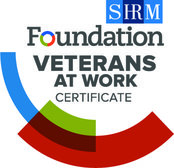We can confidently say that even if you’ve been living under a rock in the govcon industry this past few months, you have still probably heard the shouts regarding CIO-SP4 delays, amendments, and drama. Short of rolling our eyes one more time at the craziness of it all, what lessons can we take and learn from to better prepare our proposal teams for the next big bid?
BOOST has teamed up with Cy Alba and the team at PilieroMazza to focus your attention on several key elements to better prepare for future bids (we’re thinking, Polaris!?).
Need: Teaming
CIO-SP4 required several specific areas of past performance from across the board making it very unlikely for single companies to have all of the boxes checked. This brought about the opportunity for teaming, but with a caveat, there had to be documented history, actual work completed or in progress. Gone were the opportunities to have a quick coffee and call it teaming. What’s a business to do?
Lesson:
Build out your relationships early and with purpose. This was a stark reminder that no business in our industry can exist as an island, even during a pandemic. Flexibility in opportunities, areas of work, and specialties is paramount to the successful teaming and documented history for a partnership to be deemed efficient. Look down the pike at what may be to come and how that might affect your current and future teaming opportunities. If you are looking to be a Prime, analyze what areas you’re weak in and find teaming partners to fill those holes. If you’re a Subcontractor, take the time to build and show value to the big guys to remain top of mind for new opportunities.
Need: Systems and Certifications
The Government provides draft RFPs and scorecards to help you make successful bid and no bid decisions. This isn’t the time to get creative in shoving square pegs into round holes. Though the requirements might seem like guidelines more than rules, more often than not they showcase the important parts of the RFP prior to the drop. Even the mundane counts here – really read through the entire scorecard, not just the past performance quals.
Lesson:
Implementations take time, period. Trying to slam in an approved accounting system or EVMS purchasing system within a 30-day crunch is unrealistic and paves the way for mistakes. Look at previous RFPs and similar proposal awards to see where you can get ahead of systems, processes, and implementations. Seek conversations with partners and industry friends to discuss what they’ve found useful and if it makes sense for your model of business.
Lesson 2:
Do not rely on your teammates for these certifications, especially large companies that you teamed with only to utilize their certs for your scoring. Prepare your go/no-go analysis with the assumption that you have to stand on your own credentials. Any additional latitude by the government is just gravy.
Need: CAGE Code Readiness
DLA has been taking between 20 and 30 days to issue CAGE codes recently. Under the FAR you must have a CAGE code prior to bidding on federal work. Thus, if you are required to form a JV to secure the points required to win or to overcome go/no-go factors, you cannot wait until the RFP drops or else you will likely have no time to set up the new LLC or partners, and secure a CAGE code in time to bid.
Lesson:
You need to plan ahead and perhaps set up a few LLCs to have in reserve. We used to recommend that small businesses or mentor/protégé teams form at least two JVs at any given time to make sure they always have one in reserve. Well, at this point, if more procurements start to limit the ability to use subcontractors it will become important to have a LLC or two in reserve (which already are fully registered in SAM and have CAGE codes) to be prepared to pivot. Otherwise, you are set to scramble to find friends, partners, or teammates who have dormant LLCs. Because DLA is taking, possibly, 30 days or more, and there is no way to expedite the CAGE code issuance, you cannot wait or reverse course at the last minute. Understand the SBA rules or other rules that agencies must follow and then focus on teaming in those areas because the RFP cannot overrule law. So you can use the law to plan ahead!
Need: Quick Turnaround
Assume that all agencies are working on tight turnarounds. The speed of government is one that is never constant. The hurry up and wait mentality is for the post-proposal process, not before. What you know and can prepare for now should be actioned ASAP.
Lesson:
Use previous RFPs and on-ramp information to inform your timelines. If you’re looking to get an 8(a) that could be a nine-month or more process. Waiting until an RFP drop to begin these processes is an inevitable failure. As the phrase goes, the price of success is eternal vigilance.
Need: Compliance
Contracting Officers put the requirements to write a winning proposal directly in the RFP. Everything you need is there so this is not a time to flash your creative spin on how you can slide something into a place it doesn’t necessarily belong. For CIO-SP4 the “CTA” issues were a major point of concern, many firms are trying to get creative by forming 9.601(1) CTAs not understanding what they really are and not understanding other FAR or CFR rules that apply on top of the RFP (like the SBA JV rules). Also, firms see “CTA” and thing “GSA CTA” which is wrong.
Lesson:
Focus on the law and the regulations required for the agency to allow. Prepare for the most restrictive plan. In the event that the requirements are lifted slightly, you’ll still be well within the means of compliance, but you’ve prepared to batten down those hatches. Also, knowing the specific regulations as they apply to your business (i.e. small businesses acting as JVs) and how creativity can invite increased risk will help you to mitigate some headache should there be an investigation or protest.
Overall, we’ve learned some specific yet helpful things throughout this CIO-SP4 process. While these were merely the highlights of items you can take action on right now we can’t leave you hanging. So, just wait, there’s more! On August 30th, 2021, Stephanie Alexander and Isaias “Cy” Alba joined the GovCon Untethered Podcast for a discussion surrounding how to best mitigate and prepare for this new season of GWAC RFPs. Listen here.
Learn More
If you have questions about the CIO-SP4 RFP and its impact on the government contracting community, please contact the blog’s co-author, Isaias “Cy” Alba, a partner in PilieroMazza’s Government Contracts Group.
PilieroMazza, a business law firm, serves as a strategic business partner to government contractors and commercial businesses from numerous industries that operate nationally and internationally. With attorneys from a cross-section of the Firm’s core practice areas––including Government Contracts, Mergers & Acquisitions, Labor & Employment, and Litigation & Dispute Resolution––working seamlessly as a team to support the legal and business needs of their clients, PilieroMazza attorneys offer thoughtful and thorough solutions to protecting their clients’ business interests. Our knowledge on how laws are administered, productive relationships with decision-makers at various government agencies, and “boutique” business model, make PilieroMazza uniquely qualified to provide clients with highly valuable and exceptionally skilled representation. For more information, visit www.pilieromazza.com.
BOOST LLC provides government compliant and strategic corporate GovCon back-office operational support and candid business advice, combining our team of experienced and trained professionals with the drive of entrepreneurs to enable small businesses to become successful with government contracting. We have SMEs to support our clients’ growth in the areas of accounting, branding and marketing, contracts, HR, recruiting services for government contractors and strategic pricing.
About BOOST’s CEO, Stephanie Alexander
Stephanie Alexander has spent more decades than she wants to admit supporting high growth government contractors with an eye towards their bottom line. She is the CEO and founder of BOOST LLC which supports back-office functions for government contractors. She is a co-founder and Partner at govmates, a free teaming platform and technology scouting tool to connect business across the federal landscape.





